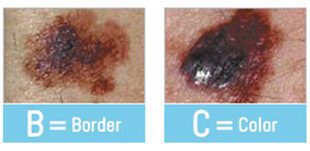By Dr. Aneley Yegezu Hundae, M.D., FACC


The primary cause of stroke is a blockage or rupture of blood vessels in the brain. The blockage can occur due to the buildup of plaque in the arteries (atherosclerosis), blood clots, or other factors. In some cases, a stroke can also be caused by bleeding in the brain due to a ruptured blood vessel.
While some risk factors for stroke, such as age and family history, cannot be controlled, many others can be modified or prevented altogether. High blood pressure, high cholesterol, smoking, diabetes, and obesity are all significant risk factors for stroke, and addressing these conditions through lifestyle changes or medications can help reduce the likelihood of stroke.
One of the most effective ways to prevent stroke is by managing high blood pressure. High blood pressure is the leading cause of stroke, and it increases the risk of stroke by four to six times. By monitoring blood pressure regularly and taking steps to lower it, such as reducing salt intake, exercising regularly, and taking medication if necessary, individuals can significantly reduce their risk of stroke.
Another important modifiable risk factor for stroke is high cholesterol. High levels of LDL (bad) cholesterol can lead to the buildup of plaque in the arteries, which can increase the risk of stroke. By adopting a healthy diet low in saturated and trans fats, increasing physical activity, and taking cholesterol-lowering medication if necessary, individuals can reduce their cholesterol levels and lower their risk of stroke.
Smoking is another significant risk factor for stroke. Smoking damages blood vessels and increases the risk of clot formation, which can lead to stroke. Quitting smoking is one of the best things individuals can do for their overall health, and it can significantly reduce the risk of stroke as well as other health problems.
Diabetes and obesity are also linked to an increased risk of stroke. Diabetes can damage blood vessels and increase the risk of clot formation, while obesity can lead to high blood pressure and high cholesterol, which are both risk factors for stroke. By managing these conditions through lifestyle changes or medication, individuals can lower their risk of stroke and improve their overall health.
Atrial Fibrillation is another condition associated with stroke. Having a diagnosis of atrial fibrillation increased your stroke risk by 6 fold. It is important you get screened for atrial fibrillation during routine check ups and get treated for stroke prevention before stroke strikes.
In addition to addressing these modifiable risk factors, it is also important to be aware of the warning signs of stroke. These include sudden weakness or numbness on one side of the body, difficulty speaking or understanding speech, sudden vision loss, severe headache, and dizziness or loss of balance. If any of these symptoms occur, it is important to seek medical attention immediately.
Early intervention is critical in minimizing the damage caused by a stroke, and treatments such as clot-busting medications and surgical procedures can be highly effective in preventing long-term disability. However, these treatments
are most effective when administered within the first few hours after the onset of symptoms, which is why it is so important to seek medical attention immediately.
As an invasive cardiologist, I have seen the devastating impact of stroke on my patients and their families. However, I have also seen the power of prevention and early intervention in reducing the incidence of stroke and improving outcomes for those who do suffer from it. By taking steps to manage modifiable risk factors such as high blood pressure, high cholesterol, and smoking, and by being aware of the warning signs of stroke and seeking medical attention immediately, individuals can take control of their health and reduce their risk of stroke.
Dr. Aneley Yegezu Hundae, M.D., FACC invasive cardiology and advanced heart failure management Dr. Hundae received his Premedical and Doctor of Medicine Degree from Jimma University School of Medicine. He completed his Internal medicine Residency at Mercer University School of Medicine. His Heart Failure/Heart Transplant fellowship at the University of Miami Cardiovascular Fellowship Program. Cardiovascular fellowship at Baylor University Medical Center.
Board certifications
• Cardiology
• Advanced Heart Failure and Transplant
• Nuclear Cardiology
• Comprehensive Echocardiography
• Internal Medicine
Port Charlotte Cardiology
3161 Harbor Blvd, Suite A, Port Charlotte, FL 33952
(941) 235-8892
www.portcharlottecardiology.com
 Southwest Florida's Health and Wellness Magazine Health and Wellness Articles
Southwest Florida's Health and Wellness Magazine Health and Wellness Articles

